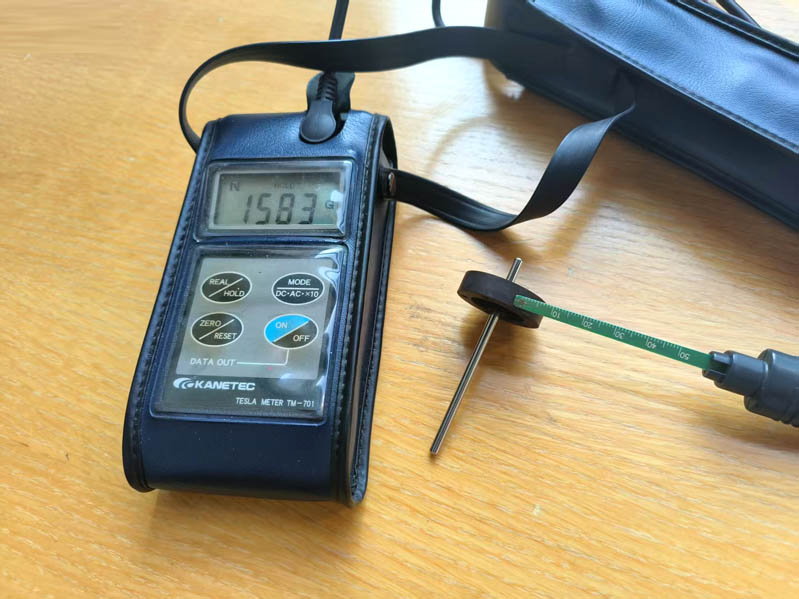Many customers often ask about the Gaussian data of magnets when choosing or purchasing them, such as how many Gauss are there? Can it reach 2000 Gauss, 3800 Gauss, 4300 Gauss, etc., and what is the relationship between Gauss and magnets? This article will summarize for you.
Firstly, we need to know what Gauss is. The Gauss of a magnet (symbol G) is the unit of magnetic induction intensity (magnetic flux density) and is one of the commonly used units for measuring magnetic field strength. 1 Tesla=10000 Gauss.
The following image shows Gaussian data of an injection molded ferrite magnetic rotor, 1583 gauss.

In terms of relationship, it is related to the material, grade, size, magnetic pole, measurement position, and distance of the magnet.
Different materials of magnets have different magnetic properties, for example, the surface magnetic field of N52 neodymium iron boron can usually reach 4000-5000 Gauss. Ferrite (such as Y30) is typically 1000-1500 Gauss
In terms of size, the thicker the magnet, the higher the Gaussian value on the surface. The larger the size, the lower the Gaussian value of the surface.
In terms of measurement location, the closer to the magnet, the higher the reading; For every 1mm movement, the magnetic field may decrease by tens or even hundreds of Gauss.
In terms of magnetic poles, increasing the number of magnetic poles will make the overall magnetic field distribution more uniform, which is important for some applications such as encoders.
The magnetic field strength (Gauss value) decays rapidly with distance.
Gaussian value is a key parameter for understanding and applying magnets, which directly reflects the strength and performance of magnets and is an important indicator for selecting and evaluating magnets.
If you need strong gauss magnet, you can choose rare earth neodymium or samarium cobalt, for gauss is not so high requirement you can choose ferrite magnets, it will save your cost.
You may like;
Can the data of the Gauss meter determine the grade of the magnets
Gauss Rating and Way Step of Using Gauss Meter
How strong is the 5000 Gauss magnet attraction?
What is the general tolerance for the gauss value of a magnet?
 China Neodymium And Ferrite Magnets Manufacturer & Supplier
China Neodymium And Ferrite Magnets Manufacturer & Supplier 


